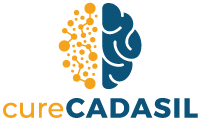The individuals in our Patient Stories archive have graciously and courageously shared their journeys with CADASIL to benefit the broader community of people who are living with this rare disease. Through their experiences, we hope you will find strength and learn more about how to face your own diagnosis.
Interested in sharing your own story? Follow this link.
Meet our CADASIL Warriors
Click a name below to read their story.
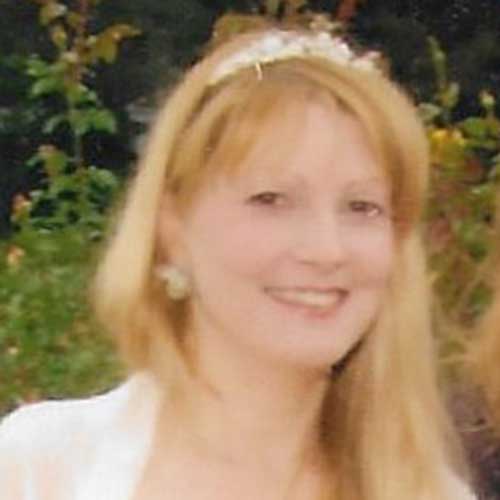 Meet Daphne
Meet Daphne
In 2008, as I was preparing to drive to work at Conneaut Valley Elementary School in Conneautville, PA, I felt an overwhelming exhaustion. At the time, I lived in Lake City, PA, a half-hour away from work. I assumed my fatigue was due to years of juggling multiple responsibilities—working multiple jobs while attending middle school, high school, and eventually undergraduate and graduate programs. My life had been a marathon of stress since childhood, punctuated by the trauma of losing my abusive father in his 40s and my mother’s emotional absence. I moved out at 17, determined to create a stable and fulfilling life for myself.
While working at St. Martin’s Daycare, I spent my lunch breaks visiting my youngest brother Todd at Hamot Hospital. Todd, diagnosed with acute lymphocytic leukemia at just five years old, endured years of grueling treatments. His bravery inspired me, even as I held his tiny hand through his pain. Todd survived the cancer, but at 19, he began experiencing tonic-clonic seizures. Without health insurance, he was often mistreated by the very medical professionals who were supposed to help him.
At 39, I experienced my first seizure while at work. I don’t remember collapsing, nor do I recall the respiratory arrest or the week-long coma that followed. Unlike Todd, I had excellent health insurance and a supportive superintendent whose daughter also had epilepsy. However, as my seizures continued, I sought answers from specialists, eventually landing at the Cleveland Clinic. Genetic testing revealed the unthinkable: I had CADASIL (Cerebral Autosomal Dominant Arteriopathy with Subcortical Infarcts and Leukoencephalopathy), a rare and incurable genetic condition. The doctor’s prognosis was grim—just 2 to 10 years to live.
My world turned upside down. I married the man I had been dating, sold my home, and moved to Hershey, PA. Unfortunately, my husband spent a significant portion of my money and began treating me poorly. A neurologist at Hershey Medical Center, Dr. Kersten Betterman, confirmed that terminal diagnoses often bring out the worst in people. Realizing I deserved better in the time I had left, I divorced him, moved back to Erie, and bought a small house near my old workplace.
Life in Erie, however, was far from the fresh start I hoped for. Medical care became increasingly impersonal, especially after UPMC acquired Hamot Hospital. Dr. James DeMatteis, my first local neurologist, treated me with compassion but ultimately left due to the constraints placed on him by the hospital system. My current neurologist, Dr. Mayoglou, has told me bluntly to accept my fate, as there are no effective treatments for CADASIL.
Beyond the medical challenges, my neighbors and community treat me with indifference or outright hostility. Three years ago, after a seizure, I was taken to the hospital where I was subjected to abuse and a humiliating review by a so-called “committee.” Despite being well-informed about my condition, I was met with ignorance and skepticism.
Todd, now in a near-catatonic state, has retreated from conversations about CADASIL. We both live in isolation, struggling with the emotional and physical toll of this condition. Weekly seizures have left me unable to drive, and I rely on deliveries for most of my needs. I feel like a prisoner in my own home, with little support and even less hope.
There is so much more to my story, but even recounting it feels overwhelming. I long for the life CADASIL stole from me—a life of independence, connection, and hope.
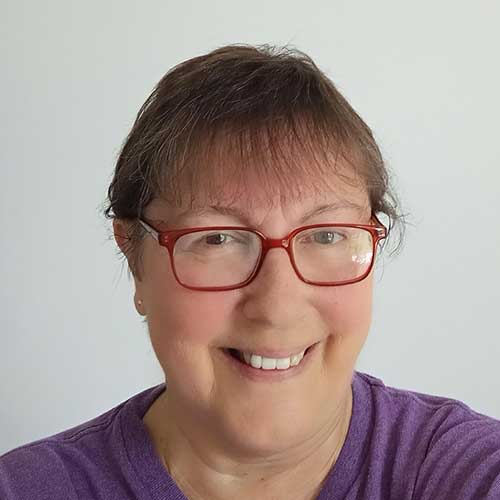 Meet Pam
Meet Pam
My husband, Ken, was diagnosed with CADASIL in 2006 after experiencing three strokes. He’s 69 now, and we navigate life together through the ups and downs of his vascular dementia. His mother also had CADASIL, so we’ve seen firsthand how this disease can affect a family. Some days are good, where we can share moments of joy and connection, but the bad days—when his memory lapses or confusion takes over—can be incredibly difficult.
I’ll admit, there are times I feel frustrated. When he has an off day, it’s hard not to let the weight of it all get to me. Do I get angry sometimes? Yes. Should I? Probably not. But I’m human, and this journey tests even the deepest patience and love.
Friends and family often ask how he’s doing, but their responses can sometimes feel dismissive. “I know someone with dementia,” they’ll say, or “We all lose our memory as we age.” While well-meaning, these comments don’t truly capture the heartbreak of watching someone you love struggle with something far beyond normal aging. In those moments, I feel alone, as if no one really understands what we’re going through.
Support groups help to some degree, providing a space to share experiences with others who truly understand. But at home, it’s just Ken and me. I watch him get frustrated and angry when he can’t remember something, and I feel helpless. I want to take that pain away, but I can’t.
Recently, I found a small but powerful way to help myself stay grounded. I had a bracelet made that says: DON’T COUNT THE DAYS. MAKE THE DAYS COUNT. On the hardest days, when I feel overwhelmed and alone, I look at that bracelet. It reminds me of what really matters: I’m with the man I love, and every day with him is a gift.
So, I tell him I love him—every single day. No matter how hard it gets, I hold on to that love. It’s what keeps me going, and it’s what gives me strength to face whatever comes next.
 Meet Roxanne
Meet Roxanne
In 1999, I was diagnosed with a rare disease called melorheostosis (non-curable, non-treatable). I thought, “Hmm, okay.” That year, I saw 26 doctors. When one doctor got tired of me or didn’t know what to do with me, they would just pass me off to the next one.
Fast forward to seven years ago, after millions of migraines and numerous blood tests, I was informed that I also have a disease called CADASIL. So now I have two conditions, both non-treatable and non-curable. I was told I would be in a wheelchair by the age of 40 because of melorheostosis, but I refused to accept that. Now I’m 57 and still walking. Don’t get me wrong—I do get stiff from time to time. I’ve had six surgeries over the years to restore movement in my knee and ankle. However, I still can’t bend my ankle, but I’m still walking.
To keep my mind sharp, I play games on my phone, spend time with my grandkids, and work on crafts. I also make sure to visit my neurologist as scheduled, and so far, things are going well. I still deal with migraines from time to time, but we are working on managing them. My main issue now is trouble sleeping.
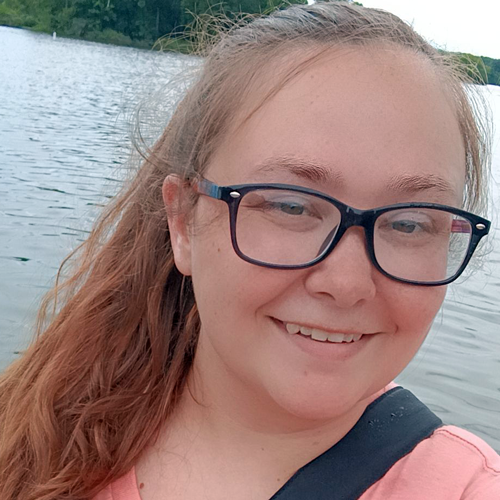
I first met my dad when I was just 6 years old. As I got older, maybe around 10, he told me that Farley’s have “thick blood,” and that usually around 30 we have to start taking aspirin every day because we are prone to strokes.
As a child I brushed it off. No way that was happening to me.
At 27 years old, I woke up and tried to talk to my husband. I realized that what I was saying in my head was not coming out right through my mouth.
After what felt like forever, followed by the worse migraine of my life, and aspirin – I got to feeling better later that day.
Talked to my doctor, and after a CT scan that came back (weird for your age) and an MRI diagnosed me with MS – I was confused and devastated. My neurologist went on maternity leave, and I was sent over to a new neurologist who looked into my scans and told me he’s not sure it’s MS. My disease acts like it, but the patterns are off. He just had a feeling. After a lumbar puncture and many family history questions, he told me he was pretty sure I had CADASIL. He jumped through hoops to finally find a place that would do my genetic testing and they would go based on income for payment. $100 and one poke later, the results were in….Positive for CADASIL at 27 years old.
Three years later, I’m receiving my second MRI to see how far the lesions have progressed. That was yesterday. The last couple years in TN my doctors didn’t understand it or just didn’t care. They’ve treated me like it’s just no big deal, and just go on living life until symptoms start. Then they will treat my symptoms. How SCARY! Only info I have is the internet because not a lot is really known is what I’ve been told.
Moving to Ohio and finding my neurologist at Wexner Medical Centers has been amazing so far. She shared my same wonders and concerns and really seems to care for my well-being. I just pray this isn’t passed on to my children.
Meet Sheila
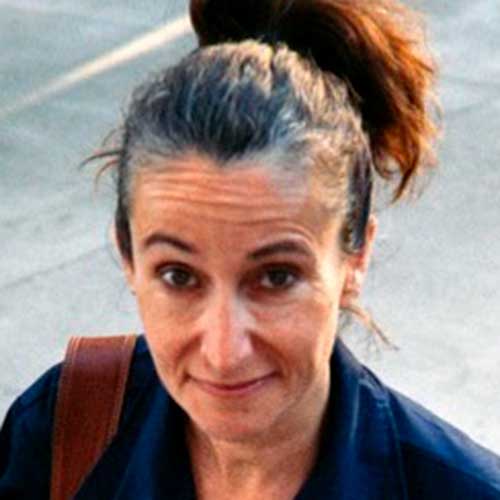 Meet Ki
Meet Ki
Before 2017, I considered myself a very healthy person who had an occasional migraine – but that year I learned that I had CADASIL, and that I had inherited it from my father. I went to five different neurologists on my path to learning about the disease, how it was affecting me, and what to expect in the future. Very few doctors had the expertise or experience to help me or give me much hope. At the time, there was so little available information about the disease, and what I was able to find through my own internet research felt grim, mysterious, and discouraging: “It’s a rare disease, people who have it only live for so long, you’re going to have strokes and you’re going to forget who you are and who your family is.”
I told very few people about my diagnosis for the first few years, and kept it from my teenage daughters – I didn’t want to terrify them with the knowledge that I had such a serious disease or that they might have it as well.
When I met and began working with Dr. Fanny Elahi, her positive outlook, work, and knowledge changed my feelings about having CADASIL and gave me hope. I have since shared my diagnosis publicly and have become involved with other patient advocates and the broader CADASIL community. I launched ProjectCADASIL, a social media project with goals to promote awareness, share important resources and news, and secure funding for new therapies and treatments. ProjectCADASIL also shares the stories of people whose lives have been touched by CADASIL, including doctors, scientists, patients, and their loved ones.
Today, I am hopeful. Dr. Elahi and others in the medical community who are focused on CADASIL are learning more every day. I regularly see reports of research or medical developments related to the brain. Gene editing therapy will lead to a cure for CADASIL eventually, and treatments will be developed even sooner. In the meantime, I’ll continue doing everything I can to make that day come as soon as possible – for myself, my family, and all other people suffering from this disease.
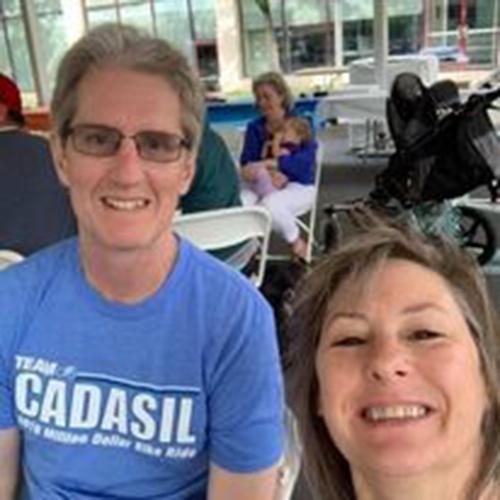 Meet Michael
Meet Michael
In June 2015, I suffered a stroke. I had no risk factors, but I did have a history of migraines with aura, and my mother had died at the age of 45. I was diagnosed with CADASIL in August 2015, and my brother was diagnosed in December 2017. Since then, I have been tirelessly raising money for research to find a cure for CADASIL.
I’ve been an active participant in the Million Dollar Bike Ride for the past five years as well as organizing over 20 other fundraisers, including several “Board & Brush” nights, two online auctions, and events through the Albany Devils (a top affiliate of the New Jersey Devils of the National Hockey League), the Tri-City Valley Cats (a Class A affiliate of the Houston Astros), the Albany Empire (a National Arena League professional football team), and SaveAround Coupon Books. In total my family and supporters have raised over $41,000 for CADASIL research through these events.
In the past four years I’ve also published four children’s books in my Tails from The Parlor series: Billie’s Vacation, Tucker’s Surprise, Piper’s Pals, and Gracie’s Gang. The proceeds from these books have all gone towards funding CADASIL research–to order your own copies, please visit my website!
These are model efforts to illustrate how local fundraising teams can make a difference. If you are interested in donating directly to cureCADASIL, please follow this link.
Meet Sarah
In September, Sarah joined the cureCADASIL
volunteer team and also became a participant in the CADASIL Consortium natural history study. Sarah shared with cureCADASIL what motivated her to participate in the study and her experience during her baseline visit.
My CADASIL story started with my mother, who received her diagnosis in 2008 after entering treatment for headaches and blurred vision–and in retrospect, it also explained what we had observed with my grandmother, who had been afflicted with early dementia. While I was in college, I found I was having word-finding challenges, and a few years later I decided to get myself tested. After my own diagnosis, I joined some CADASIL support groups on Facebook, and through posts there I learned about research studies being conducted, such as the CADASIL Consortium study at University of Wisconsin – Madison. I decided that I should play a part in the quest to better understand CADASIL and contribute to any research that might lead to treatment.
I was one of the earliest participants in the Consortium study, and I was grateful to the research team for how kind and welcoming the process was. After I had first reached out with my interest, the study coordinator and I set up a screening phone call so I could learn more details about the study and ensure that I was a qualified candidate. My baseline visit took place at UW-Madison, and there was no financial cost involved except for the gas I spent traveling to and from the campus.
The only preparation that I had to do before the study was to fast beforehand for the blood draw. The study coordinator began the day by reviewing study information and informed consent. We then did the blood draw, which was a smooth process, followed by some food provided for breakfast. We spent quite a bit of time going over my history, including personal, lifestyle, physical health, and mental health factors. We completed motor and cognitive testing, which consisted of doing various body movement tasks, as well as game-like tasks on a tablet. I also met with Dr. Jamie Elliott for a neurological exam, consisting of additional motor and sensory testing, and underwent an MRI. Much of the day is spent in the lab, but snacks and lunch are provided and I was able to take as many breaks as I needed. I recently went in for my 12-18 month follow-up and found the process to be similar, and just as warm and generous as my first visit.
Being part of the CADASIL Consortium study has made me more hopeful in my outlook about the disease. I didn’t originally know how much research was being done, or from how many different angles. The researchers genuinely care about understanding CADASIL and finding a treatment for us. They are looking into the biological and lifestyle factors that affect CADASIL, while several other research teams are working on various potential treatment methods. There are currently over 200 individuals taking part in the Consortium study, but they need greater participation from the community to stay on track with their research goals. I hope my experience encourages others to join the study and help us get closer to a cure for CADASIL.
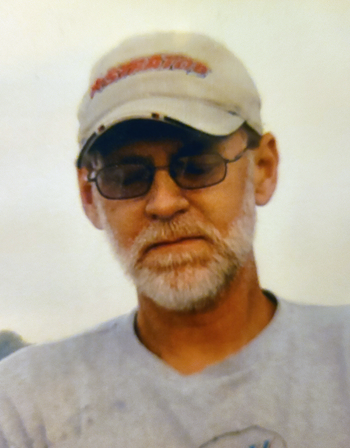 Meet Mark
Meet Mark
I am writing this for my late husband. Mark’s journey started in 2015. He retired in 2015 to enjoy his passion for fishing and hunting yet that never happened due to falling into depression and sleeping most of the time. Thus went on until 2018 when I got him to see a therapist which he did for a while. Later that year he did a few really odd things including driving into in-coming traffic and not realizing it. Finally he agreed to an MRI, and we found 8 strokes, 2 very new ones. From there, he had his 9th stroke on vacation which showed itself, as the others were silent. From there, many many tests were done. We went to Mayo for more MRIs and then the neurologist suggested genetic testing for this ugly disease and of course it was positive. From there, he experienced dementia, loss of compassion, empathy, logic, interest in things, eventually confusion, loss of time and what day it was. Slept majority of each day through 2020/2021. Things got better and we took a small vacation he enjoyed which wore him out. He then started forgetting that I was his wife. Thinking he was still married to previous wife, he forgot my last name but never my first name. Eventually I had to shower and shave him and then feed him. In the end he required morphine (Ativan) until 11 days before death. Hospice came in. He shut down very rapidly and finally passed very peacefully with his family at his side. There is a lot more, but this is the just some of this awful disease CADASIL.
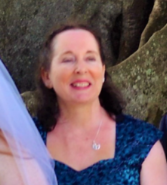
I was 13 years old when I had my first TIA. I lost feeling in my left hand, left side of my tongue, sight and could not speak properly. I threw up 15 times, before a doctor gave me a knock out drug into my butt. I have continually suffered from these since.
Being an Australian Citizen no one over here knows anything about CADASIL. In fact, still today in 2021 I have to get doctors to look up my disease.
At 13 I was told I suffered from Familial Migraines. It was not until 2017 that I finally received the CADASIL diagnosis.
I am often left for several hours in agony while I wait for the doctors to catch up and knock me out. In 2018 I spent 9 hours in extreme agony (I liken my pain to a metal skewer stabbed into the eye numerous times) before becoming an extreme emergency with a blood pressure of 353/250! Yes I should have been catatonic, but I never faint. I just felt the pain. (This has now happened numerous times.) That happened to be my first major stroke. Causing my white brain matter in that area to quadruple in size (from about sultana size to plum size on my MRI.) I lost use of my left hand, likening it to cutting the strings on the puppet of the puppeteer. After 3 months of rehab I am mostly normal, except for the continual equilibrium problem and major headaches.
Don’t get me wrong, I am not a depressive person. Luckily I married at 21 and am still married 28 years later. Had my two children by the time I was 26 and taught primary school for 25 years.
What does get me upset is the fact that I can no longer work at 49 and that I have probably passed it down to my children. Not something I would wish on anyone.
I would like to do a fundraising walk over here in Australia. Not only to raise funds for the future sufferers but to get the message out there about CADASIL. I need to do this before my parents pass away and I no longer have support. There is no rare disease day in Australia!
My cousin who experienced his first TIA at 30, passed away at 59 last year from CADASIL. And here’s the kicker, he only had CADASIL. I now have CADASIL, Hydrocephalus(diagnosed 2008), VP shunt put in in 2014, sudden onset sugar diabetes, and Vitiligo. My body is biodegrading from the inside out!
Reading that CADASIL was first discovered in 1977, simply amazes me! I have even had doctors call me a liar before I was diagnosed when I described my previous symptoms. It is extremely frustrating in Australia. Or the classic was from the leading emergency doctor on duty at the time, “Your medical history is too extensive for me to diagnose” and I was given a valium and sent home!!!!
This just further highlights the help I need.
Desleyann
** All stories shared on cureCADASIL are the patient’s personal account and does not reflect the views of cureCADASIL. Every patient has a story, and we want to share all stories for motivation and encouragement.
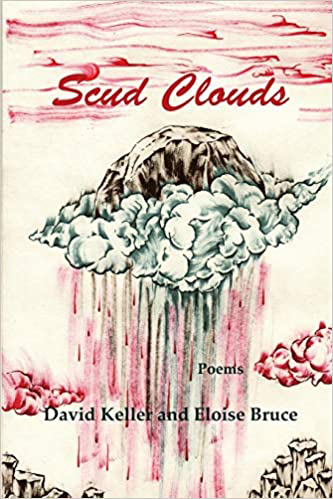 Meet David
Meet David
This patient story is adapted from the foreword of our new book of poems (Scud Clouds by David Keller and Eloise Bruce) about our journey since David was diagnosed with CADASIL. It is a chronicle in poetry of our experiences with this disease as husband and wife.
We are poets and for many years we have written about our life both separately and together. This book is a journey that began in earnest when David’s Uncle George was diagnosed with CADASIL. The trajectory of the disease was not identified before George Keller was diagnosed, though it is certain the gene had been passed down for a very long time. However, David’s grandmother and his father died in their fifties before their symptoms presented.
David like everyone with CADISIL is in interesting company; it is thought that the Victorian critic John Ruskin suffered from CADASIL. Ruskin reported in his diaries having visual disturbances consistent with the disease, and it has also been suggested that it might have been a factor in causing him to describe James Whistler’s Nocturne in Black and Gold—The Falling Rocket as “asking two hundred guineas for flinging a pot of paint in the public’s face”. The philosopher Friedrich Nietzsche may have had CADASIL rather than tertiary syphilis; and both Felix Mendelssohn and his sister Fanny likely had the disease. Even today it is often misdiagnosed as Parkinson’s or MS. Though Willem de Kooning had Alzheimer’s and not CADASIL, David was fascinated by a visit to MOMA with Baron and Janet Wormser. He remembers Baron speaking about what he saw as the positive effects of dementia on de Kooning’s paintings of that last and late period. David also sees the mysterious ways in which his dementia has shaped his writing since he was diagnosed.
For David’s family it presents very late. David was finally diagnosed in 2011, when he was about to turn seventy. The journey toward that diagnosis was not fast or direct. David was having odd symptoms that included passing out, hallucinations, loss of executive function and balance. When he was writing he would sometimes slump over and wake later. Once he was supposed to pick me up at the train station and I waited for several hours, and when I finally arrived home he had covered the floor with pots and pans and had put one piece of dry dogfood in each. We began getting late notices because he wasn’t paying the bills, and at one point he told me there was no money in the bank to buy groceries. Bills from odd purchases, like a really expensive life-insurance policy, came in the mail. At the time David was working as a carpenter, and he could no longer safely go up a ladder. There were visits to the emergency room, doctors, and many tests that baffled. We were trying to find a neurologist who knew what CADASIL was, much less having treated it.
In 2011 we finally ended up at the University of Pennsylvania, with a brilliant diagnostician, Murray Grossman, who confirmed that it was CADASIL and pointed us to David Lynch, a specialist in pediatric neurology but who had seen the disease before and had seen it in adults. Finally, David had the blood test that confirmed the he had exactly what we thought, a form of dementia that is little understood and has no treatment or cure.
David continues to write, though he has trouble with the computer. He published a book of poetry in 2014. I continue to work part-time as a teaching artist as I have done for many years. We go once a year to visit our current neurologist Dr. Gediminas Gliebus, who always comments on how well we deal with the disease; I think that is largely because David is a very happy person. We also have some support systems that have worked pretty well so far. Like all of us, we live in a house of cards that could tumble at any moment. We sometimes read posts from members of the CADASIL Facebook group and so many people have debilitating migraines which is not one of David’s symptoms. We thank God for that. We also have no children and David’s two sisters do not have the disease. Our nieces and nephews and their children and grandchildren have escaped this fate. We are grateful to God for that.
We decided to make these poems public because there are so many families being affected by dementia of all kinds, and, having had this experience, we know how difficult it is for people even now to speak about it. We don’t intend for this to be a how-to book because that is not the way poetry works. We offer these poems to do what poetry does in all if its elusive and mysterious ways. We are including a few poems from the book here for the CADASIL community. The book is entitled “Scud Clouds” and is published by Ragged Sky Press. It will be available at Amazon and Barnes and Noble in the early summer of 2020.
To learn more or purchase Scud Clouds: Poems – Click for more information.
I Was Right
There we are, at a picnic table in New Hampshire,
and she tells me her husband had Alzheimer’s disease.
I question her, saying I, too, have begun
to have memory lapses now and again,
and that I worry. She says, I’ll give you
the numbers of some eminent New York doctors,
who will tell you, you are wrong. Call me,
and we parted at the end of the evening
as we do every eight years, on average.
Every year on my birthday, I get
a letter from an old friend, and I
send one on hers. We each worry
when it doesn’t
come on time,
that the other has died.
This May I got only a cryptic note, saying
she would write when she had good news.
I wonder what she means.
Snow Days
And I wondered why I mostly include the weather
in my poems. Today, after the snow stopped,
it was like a child who’s decided it’s been sulking
long enough, so it just stops. It had snowed a foot
during the day, boring, nothing else happening—
no gale winds, no freezing sleet—just snow.
“Dirty Monkey” says Washoe the chimp, learning
to sign. Gradually, I lie down and relax,
and the dog groans, softly.
Last night my wife and I
discussed the list for the grocery shopping,
including a flyer for a special
on pot roast, which she did not think to write down.
But when I’d finished the shopping I could not
remember the last thing I was supposed to get
from the flyer and so didn’t buy it.
Oh, to have forgotten a roast so fast.
I’d bought everything on the list and worried
that I was forgetting something, something.
And my wife was distraught and annoyed
one more time. One more not, could not.
“Filthy Monkey” says Washoe, he is learning
to curse. This is how my life proceeds,
nothing systematic, even the way
the mind quits after a long day, going
away. I am sorry, my love, sorry again.
It is not the way I’d expected, again.
I include it so that I may recall how life was:
sad, though not gloomy, a day of melting snow.
100th Love Poem
When we are gone, my love,
rabbits will still breed and rest under our sugi pine.
The bones of our dogs will still rest in its roots
while our nieces and nephews dispose of our paper lanterns
and haul our tansu chests and Nakashima table to the east
and the west, to place them under new eaves.
Children will still walk past
without stopping to gather small pinecones.
Sometimes the little girls will cry
because of some cruelty at school that day.
Miles away the beach and the ocean
would still recognize me and I would speak
words of love to you, I would, if I still had breath.
The Possibility of Silence
From the front, just another of the brownstones
on the block in Philly, but once you enter the long hall
you come to your room, two rooms really,
one that has a large, round bathtub in its center
and, beyond that, the back entrance.
Once there you pass to a yard
almost filled by a picnic table, through another door,
and you’ve left the house and yard already
for a small street. It’s early morning
and you could turn left or right for a walk.
The sun’s barely up, though dusty, the light
squeezed dry, the row of small shops and a tree,
also dust-covered, are deserted.
You seek nothing here but a breath of the daylight
before you leave for the lecture you’ve come for.
That’s hours away, after breakfast, a couple of stale Danish
and a cup of coffee from a mug left on the table. No grapes.
You hardly know how close you are to the day’s center
in the dream you will have of this in the future
or the evening that led here after a long day’s work, here
being a Cuban restaurant and a table for you both outside.
Everything has taken an oath of happiness. Have
another glass of wine, as fall begins once more.
It’s only a short trip to your car from the table, and to bed.
Nothing in this dream will make a difference
when you leave. You are grateful for it all
and the laughter. Even for the bathtub you couldn’t
figure how to empty and so left full of water.
There is nothing to regret. It will not be filled with pain,
or not for long. Leave laughing. Goodbye.
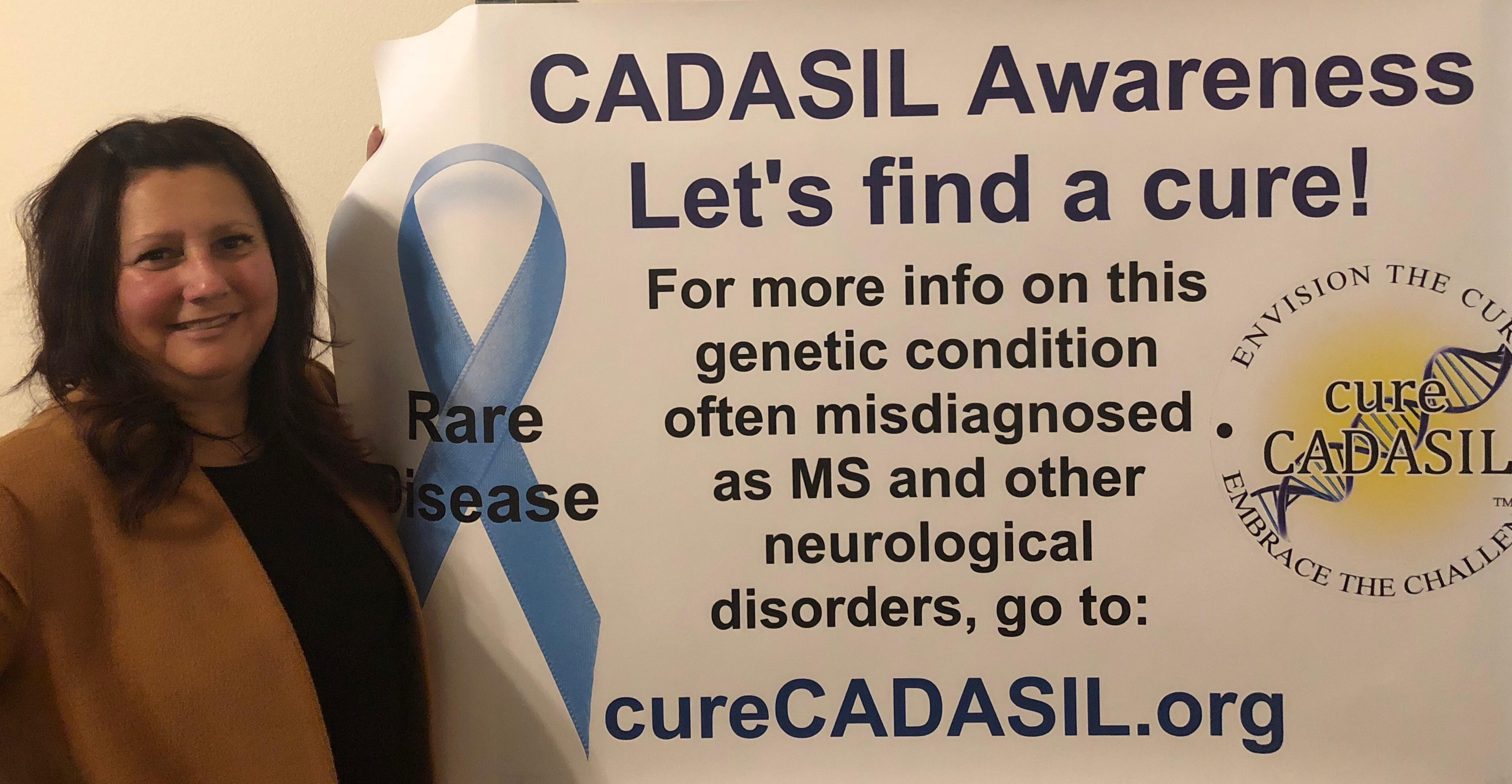 Meet Barbara
Meet Barbara
I have a story, as I was reading testimonies on cureCADASIL.org somewhat trying to find myself in their story’s I realized I too have a STORY, a story to be told.
My story is one of a single Mother who raised four wonderful young adults. I juggled a career, family and survived all the ups and downs along the way. My journey is one of which I had not choice, I was born with a rare disease called CADASIL. CADASIL does not define or control me, it is not my story, it’s a piece of my story, not my ending by any means, with the help of awareness and research toward a cure!
I am currently 53 years of age and was officially diagnosed with CADASIL, September 25, 2018. My journey toward diagnosis began as early as August 31, 2017. While at work as I got up from my desk for a break I notice a slight tingling numbing sensation on the tip of my tongue. I recall saying to myself at the time that it was an odd sensation. I returned to my desk and googled symptoms of stroke. I had no other symptoms other than a feeling of fatigue and a metallic taste in my mouth.
The tingling of my tongue passed within seconds and was replaced with a numbness just on the tip of my tongue that, combined with the ongoing metallic taste, continued throughout the weekend. By day four of the continued feeling/taste I was urged to contact my daughter who worked for a HealthCare facility at the time. She immediately reached out for the healthcare advice nurse as I was telling her of my symptoms. The nurse came on the line and set up an appointment for me to have an MRI scheduled two days later.
About two hours after the MRI was completed, I received a call from the hospital. I was told I had a stroke and that I needed to go to the nearest Emergency Room to be seen. I was admitted to the hospital and a slew of test were performed, all of which came back normal. I was told the medical team was suspecting either Multiple Sclerosis or CADASIL. Subsequently, I underwent a lumbar puncture they said would rule out Multiple Sclerosis and that test came back negative as well.
Shortly after my release from the hospital, I had a follow up appointment with a Neurologist regarding my MRI results. The physician said from the MRI, it doesn’t look to be CADASIL, but I could have a genetic blood test done to be sure. I was advised of the extremely high costs involved in taking the test for CADASIL and if positive there is no cure for this disease. Unfortunately, this deterred me from taking the test. Yet I was still unsettled, without answers, only assumptions as to what caused the stroke. In the end, the physician told me I could plan on my life mirroring my Mother’s life. My Mother passed away in October 2011. In hindsight, I believe my Mother also had CADASIL but was never diagnosed as such.
I changed my diet, my exercise routine, tried to change my stress levels immediately. Months went on with increased headaches, extreme fatigue, dizziness, memory loss and small bouts of not knowing where I was at times, thank god this was resolved within seconds, but very scary, this became my new normal.
In April 2018 I went on a family vacation to Cabo San Lucas. During the last few days of my vacation, after a small boat excursion, I experienced dizziness and equilibrium problems similar to Vertigo. Upon returning home a few days later the balance issue worsened. I made an appointment to be seen and was told it could be an inner ear infection that was causing the unbalance. The physician decided to order another MRI just to be sure it wasn’t another stroke, given my history. The results from the MRI showed more scarring of the brain and a recent stroke within a seven day period. I was advised to get a second opinion from an outside facility Neurologist.
The Neurologist I chose to see made some changes in my medication, suggesting other alternatives to stop my headaches. In addition he suggested getting the genetic blood test for CADASIL and to also have a sleep study completed. I received my results on Tuesday, September 25, 2018. I tested positive for NOTCH3 gene, CADASIL. Before receiving the results I had done some research on CADASIL , but nothing could have prepared me for hearing the actual words that MY test was positive. I am very fortunate and blessed to have a GREAT family support group. My daughter is the very best, my three sons helpful in staying positive, encouraging exercise and making sure I’m staying healthy. My significant other is a wonderful man that takes care of all that I can not do around the house and meals.
Let me not forget my Sisters. The hardest part in the beginning of this Journey is the dominant inheritance factor. Not only am I getting love and support from my Sisters, they to are now faced with making decisions for and with their families regarding diagnostic testing for CADASIL. Even more, my own children are facing this decision. It is difficult to know you have a 50% chance of having been born with a Mutated Gene that is terminal at the age of 30. Lots of choices and decisions to be made.
Thank you for reading, more to come on my journey with this illness.
Barbara
I am determined to do my best to help organizations like CureCADASIL.org to make Awareness of this Terminal Disease known and publicized. To strive for fundraising efforts to help in Research and find The Cure for this rare disease.
** All stories shared on cureCADASIL are the patient’s personal account and does not reflect the views of cureCADASIL. Every patient has a story, and we want to share all stories for motivation and encouragement.
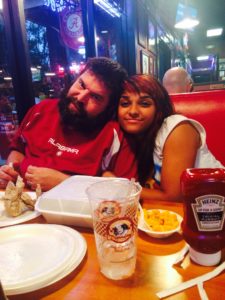
Albert and Crystal
Meet Albert
My husband had his first stroke in his 40’s when our daughter was 5. We changed eating habits and tried anticoagulant therapies but the strokes kept happening. The original neurologist basically gave up on us. So I finally talked my husband into going to the VA. The Neurologist there actually listened to us and wanted to know why an otherwise perfectly healthy man was having strokes. He had been to a conference that mentioned the disease and decided to test for it. The poor man had a time trying to find the code needed to test for CADASIL. The test came back positive for CADASIL.
I have been working in healthcare for years and I had never heard of what was killing my husband. My husband died after his 5th major stroke in 2016, our daughter was 15. It was on his Medulla and took away his ability to swallow. CADASIL can cause seizure disorder, memory loss, speech problems (he would mix up “he” and “she” or words that rhymed), turned his personality into a child like state (he had been an officer in the military and a Supervisor at GoodYear for over 20 years), he had problems reading (he used to be an avid reader), and would get lost in his own neighborhood as well as confused easily. He had a countless amount of TIAs. His siblings are now having strokes as well. He had a niece who had a seizure disorder that she was born with that passed at 3, and the doctors believe it may have been related to the same genetic disorder that caused CADASIL.
We at cureCADASIL are so thankful to Crystal for sharing this story after the loss of her husband Albert to CADASIL and hope in sharing it helps others in the CADASIL community.
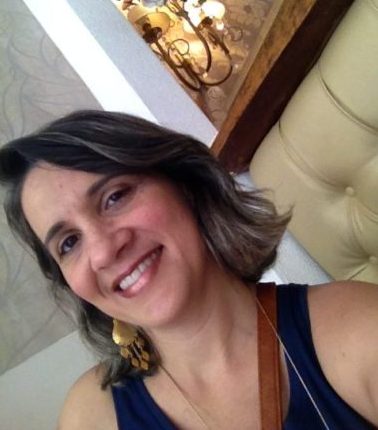 Meet Karla
Meet Karla
Karla is a 42-year-old administrative manager of a luxury residential condominium complex in Brazil who has been living with CADASIL for almost two decades. She was 24 when she first started having health problems, starting with high blood pressure. Then came headaches, forgetfulness, and some loss of strength on her left side.
Her doctors—cardiologists and neurologists—thought she had hypertension. Or perhaps multiple sclerosis, which is often heard in stories of CADASIL patients. Then in 2006 she had a stroke, followed by a second event in 2013.
At the same time her mother was also facing health problems—headaches, micro strokes and some paralysis. This prompted a series of genetic testing, finally identifying the disease in both women as CADASIL.
Unfortunately Karla’s mother died in 2018, three months after Karla’s CADASIL diagnosis. Karla continues to work, although a third stroke at the beginning of 2018 left her with some cognitive deficits. She says she manages day-to-day with prescription drugs, including antidepressants. She also sees a therapist.
“I drive, take care of my house. I am tired, but still working,” she says.
To date neither Karla’s grown children, ages 19 and 23, or additional family members show any symptoms of the disease.
“I’m still getting used to these new barriers. The commitment of the scientists and knowing that I will make myself available for testing” gives her hope, she says.
We at cureCADASIL are so thankful to Karla for sharing her international story so she can help others as she says others stories have helped her. We also thank our volunteer Joyce for assisting with this story.
Karla é gerente administrativa de 42 anos de um condomínio residencial de luxo em
O Brasil vive com CADASIL há quase duas décadas, embora permaneça sem diagnóstico há muitos anos. Ela tinha 24 anos quando começou a ter problemas de saúde, começando com alta pressão. Então vieram dores de cabeça, esquecimento e alguma perda de força em seu lado esquerdo.
Seus médicos – cardiologistas e neurologistas – achavam que ela tinha hipertensão. Ou talvez vários
esclerose. Então, em 2006, ela teve um derrame, seguido de um segundo em 2013.
Ao mesmo tempo, sua mãe também estava enfrentando problemas de saúde – dores de cabeça, derrames e alguns micro
paralisia. Isso levou a uma série de testes genéticos, finalmente identificando a doença CADASIL em Karla.
Infelizmente a mãe de Karla morreu em 2018, três meses após o diagnóstico de Karla. Karla continua a trabalho, embora um terceiro acidente vascular cerebral no início de 2018 a deixou com alguns déficits cognitivos. Ela diz gerencia o dia-a-dia com medicamentos prescritos, incluindo antidepressivos. Ela também vê um terapeuta.
“Eu dirijo, cuido da minha casa. Estou cansada, mas ainda trabalhando”, diz ela.
Até à data, nenhum dos filhos adultos de Karla sintomas da doença. “Eu ainda estou me acostumando com essas novas barreiras. O compromisso dos cientistas e eu vamos fazer me disponível para testes “dá esperança, ela diz.
Meet Carla, Craig, and Lois
The fact that CADASIL is passed on genetically can be heartbreaking for families such as Cayla Carney’s. But the disease that is affecting her, her brother, and mother, has also inspired Carney’s big, Midwest Irish Catholic family to reach out and raise funds so that a cure may sometime be found.
Francis Carney, Lois’ husband and Cayla’s father, and several of Francis’ brothers, are holding a fundraiser July 27, 28, and 29 in the Carney hometown of Cedar Falls, Iowa. All the money raised from the weekend events including bowling and a dinner will be donated to the CADASIL Association. More information about the event is available at the association’s Facebook page https://www.facebook.com/cureCADASIL/
Cayla Carney, 46, was diagnosed with CADASIL in August 2017. While not formally diagnosed because he is so unwell, it is believed her brother Craig Carney, 58, also has it. And her mother, Lois Carney, 76, was awaiting her diagnosis as of early spring.
All had had migraine headaches throughout their lives. But it wasn’t until a couple of years ago that the family heard about CADASIL, as Craig’s health took a steep decline. “He was a real Type A personality and when he went into a big depression it was very clear something was wrong,” Carney said. Craig, who had had a high-powered career in the homebuilding industry, suddenly couldn’t find his way home, to the job site, and couldn’t keep up his apartment. After he started having seizures, the family moved Craig into his parents’ house in Iowa. He is now in a nursing home.
Then in the spring of 2015 Cayla had a stroke. “I pooed-pooed it away,” she said, after a doctor told her it could possibly be traced to an auto-immune disease. “They said I had sticky blood.” But she started seeing a neurologist. She was 45.
Then in May 2017 while she was working at home in Parker, Colo., a suburb of Denver, Carney suddenly couldn’t speak. Before she blacked out, she was able to call her wife, Karen, who called the ambulance. “I spent the next three or four days in the ICU,” she said. “They thought I had a stroke but were unable to find it in the MRI.”
 It wasn’t until after talking with her mom, who also had two strokes, that she started to wonder if her problems were connected genetically. She was referred to a University of Colorado vascular neurologist and while waiting for an appointment, started reading up on genetic brain diseases.
It wasn’t until after talking with her mom, who also had two strokes, that she started to wonder if her problems were connected genetically. She was referred to a University of Colorado vascular neurologist and while waiting for an appointment, started reading up on genetic brain diseases.
She found her symptoms and medical record findings were similar to Lois’ and Craig’s, with the phrase “hyper intensity” cropping up frequently. She underwent genetic testing and in August 2017 was diagnosed with CADASIL. “It fit like a glove,” she said.
Today Carney is unable to work at her former job as a large loss insurance adjuster. “It required a high level of technical knowledge and I had a hard time focusing on the details. And my balance is off.” She is considered disabled. Two overwhelming symptoms Cayla has experiences are migraines and fatigue, affecting everyday life.
Through the difficult times she maintains a positive attitude. “I know how important it is to keep my stress level down; I’m trying to do all the right things.” She is also volunteering with dementia patients and is becoming active in the rare disease community. Cayla was able to attend a Colorado Rare Disease Day event in 2018 to advocate for CADASIL.
Cayla’s Uncles in the Carney family have been busy planning and advocating for CADASIL on behalf of her family, they also had a story published in the Cedar Republican.
We at cureCADASIL would like to thank Cayla for sharing her story with the CADASIL community and for working with Joyce, our volunteer who composed the article with Cayla. We hope story will positively impact the CADASIL community.
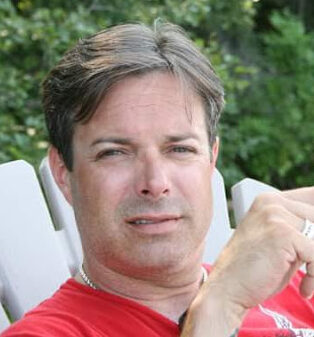 Meet Robert
Meet Robert
This is an edited version of a post Robert shared on FaceBook and used with his permission. Thank you Robert for sharing your story, it will help many people also on a journey with CADASIL.
I’m 50 years of age now and when I was 38, my wife was pregnant with our daughter and we were looking to buy a new house. After looking one day, we made a stop at Walmart and while we were walking towards the store hand in hand, I noticed that I could not see her in my peripheral vision. I thought this was strange… but continued with our shopping. Once back in the car.. two fingers on my right hand went numb and then the tip of my tongue went numb and I could not speak properly or understand what my wife was saying. This lasted for a few minutes and resolved. We returned home and I went to bed. My wife made me an appointment with our general practitioner and a week later the doctor was certain I had Multiple Sclerosis (M.S.) and referred me to a specialist who didn’t really agree. After a lumbar puncture ruled out M.S. they did an MRI of my brain.

What they found was extensive scaring on my brain. This was the aftermath of many ischemic events that occurred in the past and that I had really no knowledge of. I was however, a recovering addict and wrote off a lot of these weird things as fallout from many years of drug use. Things like talking to someone and garbling or not pronouncing a word. I also found that my memory was failing more, but again… wrote this off as collateral damage from drug addition. So, with the MRI results and it looking more like a vascular problem in the brain, I was referred to genetics where a test was done and I was confirmed as having CADASIL. CADASIL is an acronym for (“Cerebral Autosomal-Dominant Arteriopathy with Subcortical Infarcts and Leukoencephalopathy”). This is a very rare genetic disease that affects the micro blood vessels in my brain and they fail over time and don’t function properly…. from what I understand. I’m having issues with executive functioning and was involved in a study at Health Science Center in Winnipeg, Manitoba, Canada for people with brain injuries and executive functioning where I have learned some tricks to make day to day life less stressful. There is no treatment for this disease, but some great info and support from the CADASIL group on FaceBook. I’m not looking for sympathy, but rather a way to educate others and bring awareness to this disease. Many people are being diagnosed with Multiple Sclerosis as it mimics some of those symptoms.
Thanks for taking the time to read this.
Robert

Although I expected to hear that I had CADASIL, actually being diagnosed was still tough to swallow. Once I thought about it, though, I realized that nothing has really changed. Yes, I have it. Does that make me any different than I was before the diagnosis? Absolutely not.
Since it’s a condition we are born with, why should me knowing change who I am? The only difference is that now I know, so I have the opportunity to make healthier decisions and try my best to avoid stress and things that can expedite symptoms.
I’ve been healthy my whole life, but after a recent TIA, I realized something was wrong. By continuing to eat healthy, exercise, and try to minimize stress, why can’t I still be as healthy as possible? I realize each person is different and has various symptoms, but I believe a positive attitude plays a huge part in being healthy. I believe there is hope. We can’t change the fact that we have this disease, but by realizing we’ve always had it–it didn’t just show up out of the blue—we can at least try our best to get through it.
I find comfort in knowing that I’ve been ok for this long, and that it was bound to rear its ugly head eventually. Ignorance can be bliss, but knowledge really is power. We can’t control the disease, but why give in and let it control us?
I’m sure some people reading this are thinking to themselves, “Just wait… You may not feel this way next month, next year, etc.” I certainly don’t expect things to be easy, but why complicate it more by focusing on the negatives? Make the most of the positives in life and take control of what you can. Accepting I have this disease isn’t the same as embracing it. Life isn’t easy, but I firmly live by the belief that there are enough stresses that we can’t control, so the best thing we can do is eliminate the stresses we can.
Every day is a blessing. Nothing is promised.
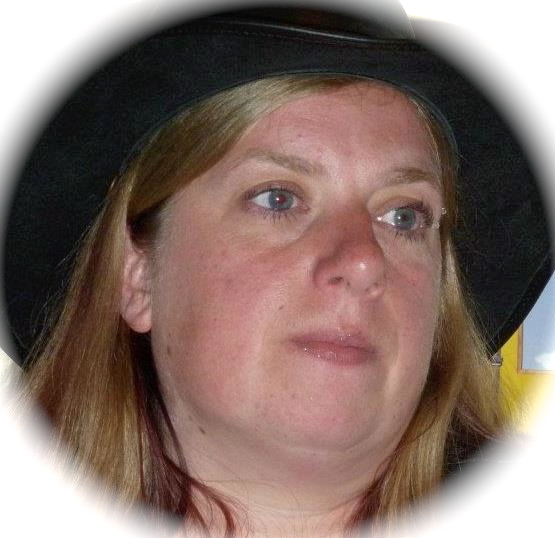 Meet Jax
Meet Jax
I was officially diagnosed with CADASIL on Oct 10th, 2012. I am 40 years old and show no symptoms of the disease at all. My mum is 60 and was diagnosed with CADASIL two years ago after lots of guess diagnoses from doctors. My mum has had four strokes and several (unconfirmed) TIAs. She has suffered with migraines, numbness, severe depression, and mood disorders since I can remember. My granddad died at aged 64 from a massive stroke after suffering several TIAs and having Alzheimer’s. We now believe he had CADASIL but we can’t prove this. He suffered with migraines and depression but didn’t talk about it.
After my mum’s diagnosis (which she received via letter due to an administration error), my sister had the genetic blood test, as she has always suffered migraines. She has two kids so wanted to test. She got her results last year in person and tested negative. I originally decided not to test as I have no children and never suffered any symptoms. Then I decided I wanted to find out, as I was getting stressed thinking about it. I had genetic counseling beforehand (I was told by my counselor that I had good knowledge of the disease and could go right ahead and have the test done). It took six weeks for the results to come back, and I had to attend the clinic for results in person.
I had decided I would give up smoking on “results day” no matter what. Needless to say, I tested positive for the Notch 3 gene abnormality and I have CADASIL. I asked to be referred to a specialist so I can find out more in-depth about the disease, as I feel different from others because I have never shown any symptoms (as yet).
I feel like I’m living with a time bomb inside me not sure when or if it’s going to go off. I did give up smoking on the 10th of October and am still not smoking. I’ve started to take 75 mg of aspirin daily (my GP “Googled” CADASIL and told me start taking it). I’m doing all I can to lower my risk of stroke. I have lower than average blood pressure, low cholesterol, and I have lost 1-1/2 stone this past year.
I am still coming to terms with my diagnosis and feel like I’m going through a stage of bereavement. My mum says she knows how I feel, but it’s hard to talk to her about it as I get upset seeing her going slowly downhill and her memory fading. I don’t wear bracelets so I have a CADASIL medic alert tattooed on my inner wrist/arm to alert medics not to give me thrombolysing drugs in case of stroke. I’m told with CADASIL that certain blood-thinning drugs can make situation worse.
This story was contributed and initially featured in the May 2013 issue of EMBRACE newsletter published by CADASIL Association. Thank you Jax for sharing your story and helping others with CADASIL.
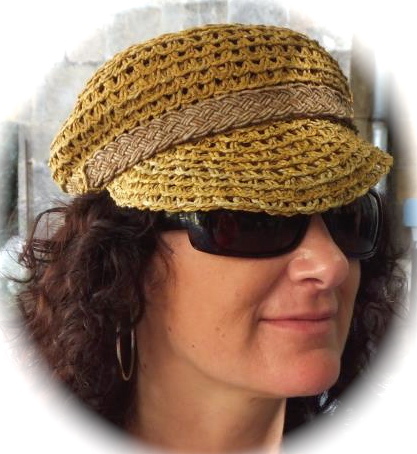 Meet Emma
Meet Emma
I was diagnosed with CADASIL three years ago when I was 37 years old, after suffering a TIA at work. I had always known something was not quite right after my first complex migraine at age 16. I had trouble with numbers, and my concentration and memory were sometimes terrible. (Still are!)
My mum has advanced CADASIL, and both my uncle and grandfather have died from it. I think my brother may have it too, as he had his first complex migraine a couple of years ago, but he doesn’t want to be tested. I have had a few appointments with doctors and neurological “specialists,” but they admitted to knowing nothing about this disease, so I self manage now. I take Vitamins B12 and D, Thyroxine and Iodine for my thyroid problem (I believe this disease has affected my pituitary gland, as I suffer with a lot of hormonal problems and sympathetic/parasympathetic nervous system problems), fish oil for depression, and I have cut out processed foods, carbs, and sugars from my diet. I also drink at least 2 liters of water a day. If I do not eat and drink this way I find it affects my health massively, causing headaches, tiredness, and confusion.
I had a nervous breakdown when I was diagnosed, and it has taken two years to come to terms with this. But knowing my life will be different than how I imagined it would be a few years ago has made me grab my life by the throat, live every day, plan for my future, love my friends and family, and never ever take anything — especially my health — for granted. It has given me the drive to develop my own business and sort my life out, rather than partying my life away and throwing my money at rubbish, as I was doing a couple of years ago. Knowing I have this has changed my life more than I ever thought it would, but I’m not going to let it ruin it just yet!
This patient story was initially contributed and featured in the May 2013 issue of EMBRACE newsletter published by CADASIL Association. Thank you Emma for sharing your story to help others with CADASIL!
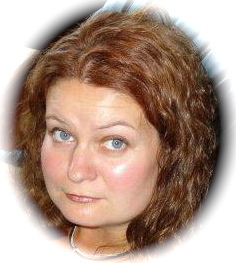 Meet Sonia
Meet Sonia
In 2001 when I was 25, I was working out at a local gym when I started to feel like my arm and legs were falling asleep. I quickly realized that the numbness was moving everywhere on my right side. Scared, I quickly left the gym and got in my car to drive home. I was unable to contact my boyfriend on the phone, so I called my parents to tell them that I felt “weird.” When my mom answered the phone, I could not say anything other than “gym” that made sense. My parents came to get me. At the nearest ER, I was diagnosed with a complex migraine and sent home. My GP referred me to a neurologist who ordered an MRI and was obviously confused by my scan results. To him, my scan showed Multiple Sclerosis, but he did not understand why I did not have any MS symptoms. He referred me to another doctor in Toronto, Canada. Upon meeting me, reading my MRI, and conducting other MS tests such as evoked potentials, the doctor diagnosed me with probable MS. He wanted to confirm the diagnosis by doing a lumbar puncture and set up the appointment for that.
About a week before the spinal tap, the doctor called me at home. He told me that he had heard about a “new” disease that could explain the multiple lesions that were evident on the MRI. He also mentioned that the test was less intrusive as it was only a skin biopsy. He refused to tell me the name of the disease and said that he would explain it to me afterwards, if the test proved positive. My skin biopsy came back positive and then the blood test came back positive for CADASIL. I was so happy that I didn’t have MS. But then my doctor started explaining CADASIL. He kept saying over and over: “Sonia, this is rare. Really rare. We don’t know much about this disease.” For the past several years, I have heard this repeated and repeated from every doctor where I have searched for answers.
It was May 2004 when I received my positive CADASIL diagnosis. I was 28 years old and had been married for one year. Knowing the genetic risks, my husband and I still decided to have a baby. In July 2004, I had my first stroke that paralyzed my right side. While in the hospital, we found out that I was pregnant. I was immediately referred to a special pregnancy “maternal” diseases program in Toronto. There a team of “experts” would help me through my pregnancy. I was followed by an OB/GYN, a hematologist, a pediatrician, an anesthesiologist, a geneticist, and a genetic counselor. Not a single doctor there knew what CADSIL was. They all promised me that they would do research to help treat me. I did research as well. I found one study on-line about pregnancy and CADASIL. It was not helpful according to my doctors. My genetic counselor admitted to me at one appointment that it was obvious that I had a far better understanding of the disease than he did, and that he was not going to be useful to me. Finally the consensus of the medical team was to treat me as a pregnant stroke survivor.
My healthy baby boy was born by caesarean section in March 2005. I had my second stroke 10 weeks later. Thankfully, my son has not shown any CADASIL symptoms – although there is a 50% chance of him having it. I am 36 years old now. Thankfully, I have not had any more strokes. I have about four complex migraines every year. The auras are horrible. I continue my quest for knowledge about CADASIL. The doctor who helped me get diagnosed has agreed to follow me even though he is a MS specialist, because there is no other doctor who knows more than him about CADASIL in my province. According to him, he treats three other people with CADASIL. I have approached the “Best Doctor’s” organization as well and have found nothing new.
I wear a medic alert bracelet and I carry papers in my wallet that explains CADASIL for when I go to an emergency rooms to get my migraines checked out, to make sure they are not a TIA or stroke. I’ve actually had one ER experience when I was told to not come back to that ER and that I should drive the hour down to St Michael’s hospital in Toronto. I am terrified of the future: of what will happen to me and what will happen to my son.
We CADASILians need a cure. We need a treatment. We need research. We need awareness.
This story was originally contributed and published in the March 2013 issue of EMBRACE newsletter published by CADASIL Association. Thank you Sonja for sharing your story and for all you do for the CADASIL community.
 Meet Courtney
Meet Courtney
Life with CADASIL is a hard, painful and sometimes lonely battle. I struggle every day with headaches, some of them excruciating. I have dealt with them since I was nine. The hardest thing is moving on with my daily activity. Being a person who had a great memory at one time, I now find myself losing items on a daily basis. Notebooks, memory pads, and sticky notes help for now with my memory issues. But it is fading, it seems, with each excruciating headache. I work through the pain. I maintain a full time job in between several doctor’s visits each month. Counseling, neurologist, eye doctor, etc. are monthly visits for me. I have to inform every person I come in contact with about my rare disease. I seem to drift from family and friends because of the somewhat hardships I have to go through. I live my life. But in the back of my mind I know I have already had two strokes before age 21, and my memory is fading so it’s only a matter of time before it gets worse.
This story was originally contributed and shared in the March 2013 issue of EMBRACE newsletter published by CADASIL Association. Thank you Courtney for sharing your story with others, a wonderful way to advocate.
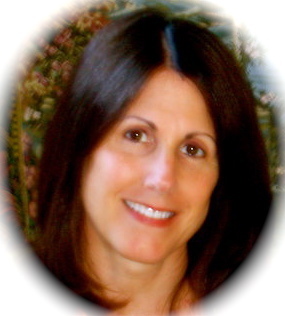 Meet Janet
Meet Janet
My first experiences with persistent headaches were in high school. I have memories of occasional headaches during childhood and early adolescence, but those that started when I was around sixteen could be brutal. I had been having them for weeks and missing a lot of school when my dad took me to his chiropractor. X-rays showed I had various vertebrae out of whack. The treatments helped, but I sometimes felt more nauseous and dizzy after a spinal adjustment than before. I didn’t tell my parents this because they were relieved to think I was getting help.
In my twenties and thirties I rode the joyous ups and complex downs of being married and raising a young son, while working many hours in a hospital office and taking college classes toward becoming a teacher. I clearly recall battles with depression, anxiety, mood swings, and fatigue, but I assumed those went along with my hectic life. I hid these symptoms behind a smiling face and a good sense of humor. I attempted to keep my headaches at bay with large doses of non-prescription pain relievers. I’d do anything to numb the insidious pain.
A divorce in my late thirties took me as low as I believed I’d ever be. The failure of my marriage hit hard, as I had always been driven to succeed in everything I held important. My son, by then a young teen, was hurting and extremely angry. I felt like a rotten mother and a fragmented shell of the person I once knew.
Meeting my second husband brought newfound happiness. I still had headaches, but my depression lifted for a while as I settled into a good marriage. My relationship with my husband remained strong, yet the depression and other issues returned. I did not understand why I could feel so awful at times. My counselor referred me to a psychologist, and I began more intensive talk therapy and opted to try anti-depressants. I could feel some relief, but I knew I still wasn’t well. I feared I might be bipolar, although my psychologist assured me I was not.
Through the summer of 2008 I went on and off several medications during my vacation from school to try and balance my emotional swings. Surely the drugs caused the now frequent sick headaches, I thought. As autumn approached, I felt so crummy that I seriously considered ending my life. I became increasingly ill, barely managing to rally for my job only to collapse at home later. Daily I had tight pressure across my forehead into the top of my skull. Sometimes if felt as though an invisible hand was twisting my brain, and I would get waves of nausea and dizziness. I kept the truth of how terrible I felt from my husband, my other family members, my friends, and my colleagues. I feared I was going insane, and that if anyone knew how sick I was, I would be institutionalized.
Near the end of October 2008, I blacked out while attempting to get ready for work. I called my husband when I regained consciousness, and he rushed home to take me to the hospital. (Please also see my story regarding my ER visit and my neurologist)
Being diagnosed with CADASIL nearly a year later, a month before my 50th birthday, was devastating. How could I have a rare genetic disease few people know exists? At the same time, my diagnosis explained many of my symptoms and answered a lot of questions. In a way, knowing I have CADASIL has helped me cope with my life. Certainly, it has made me appreciate my good days more fully, and it has allowed me to give myself permission to take it easy when I am feeling sick.
My diagnosis renewed my faith in God. I work at maintaining a positive attitude and keeping myself as healthy as I can even while I realize this disease is progressing in me. I have hope for a cure for CADASIL – if not in my lifetime, then in the lifetime of the next generation.
This story was originally featured in the December 2012 inaugural issue of EMBRACE newsletter published by CADASIL Association. Thank you Janet for sharing your story and for your advocacy role in publishing and making EMBRACE available to the CADASIL community.
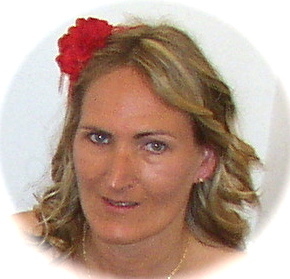
Meet Karla
I never had headaches or migraines growing up, so when I started getting them when I turned 40 years old, I thought that was strange. I started seeing a neurologist and had an MRI. The neurologist told me I might have Multiple Sclerosis but he wasn’t sure. He told me it was my choice on whether to go on MS medications or not. I chose not to. He began treating me for migraines.
One day at my job, while just standing and talking to a co-worker, it felt like a sledgehammer hit me in the back of the head. I was escorted to my desk to sit down. I could only stare. I could not talk or move. This felt like it went on forever. I finally came back to consciousness while a paramedic was talking to me in the ambulance. At the hospital they really did nothing for me, and I was released a couple of hours later. At home, I continued to have frequent “staring episodes” followed by migraines. I decided to have someone take me back to the emergency room. My episodes seemed to baffle the doctors. They sent me for an MRI, and after that they admitted me for more testing.
My father had been diagnosed with dementia when he was in his late forties/early fifties. He had a neurologist at this same hospital, and when he passed away at the age of 58 we allowed that hospital to do an autopsy. (Hence the reason I chose this particular hospital.) A neurologist came to my room after looking at both my MRI and my father’s autopsy report, and sat down to tell me he thought I have something called CADASIL. He told me about it and asked for approval to do the genetic test. I was sitting there with my mom and my best friend. As the doctor was explaining all this to us, I looked over at my mom and she had tears in her eyes. As for me, I couldn’t believe it, and I don’t even remember much of what he said or if I was really listening to him.
A month later, my husband and my mom and I went to hear the results of the genetic test. As I sat there waiting, I felt really nauseas and anxious. When the doctor came close to me and said, “The blood test came back positive, and the skin biopsy also came back positive,” I think I was in shock. Again, my mom had tears in her eyes. I can say that in some weird way I blamed my dad for this, which is really stupid of me for he didn’t know what was wrong with him. None of us knew. I got very depressed and felt a wave of doom come over me. I thought back how bad my dad’s condition got and how quickly it all happened to him. I kept thinking I’m going to die in 5-10 years. I thought how my mom had to deal with my dad at his worst, and in some ways I didn’t want my husband to have to deal with me at my worst.
Now, over two years after my diagnosis, I still get bouts of major depression, but I’m finding that I have to live my life to the fullest no matter what. I have my good days and my bad days, but my CADASIL is not going away, so I have to live with it and be as hopeful that I can that there will be research done and a cure found.
I meet more and more people online at Facebook who have CADASIL, or who know someone who has it, or who have had a loved one pass away from it. There has to be even more people out there who have CADASIL and just don’t know it yet because their doctors haven’t heard of it.
My goal is to get the word out in any way possible. KNOWLEDGE IS POWER!!
This patient story was initially featured in the December 2012 Inaugural issue of the EMBRACE Newsletter published by the CADASIL Association. Thank you to Karla for her advocacy!
